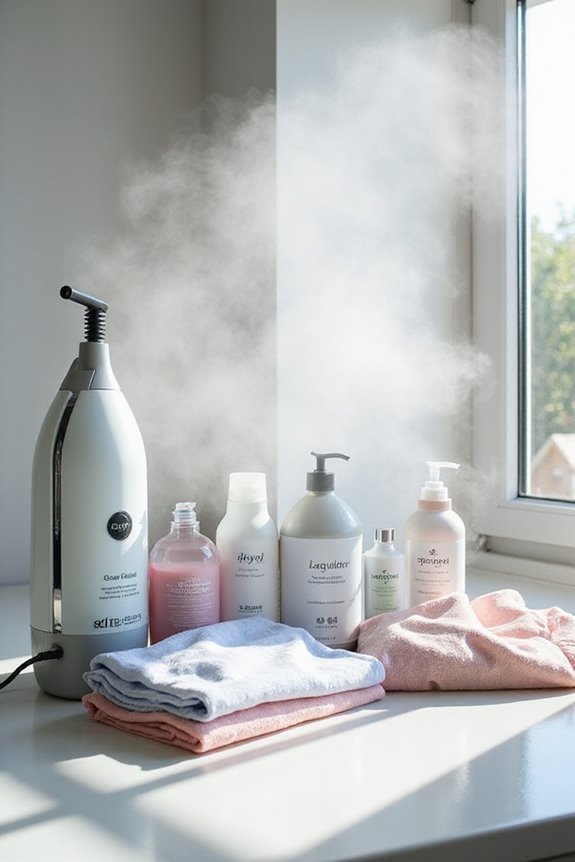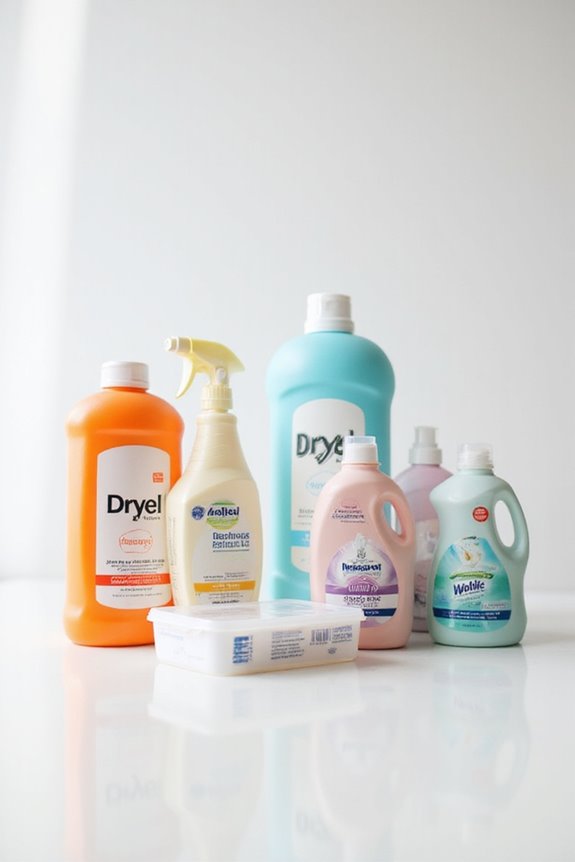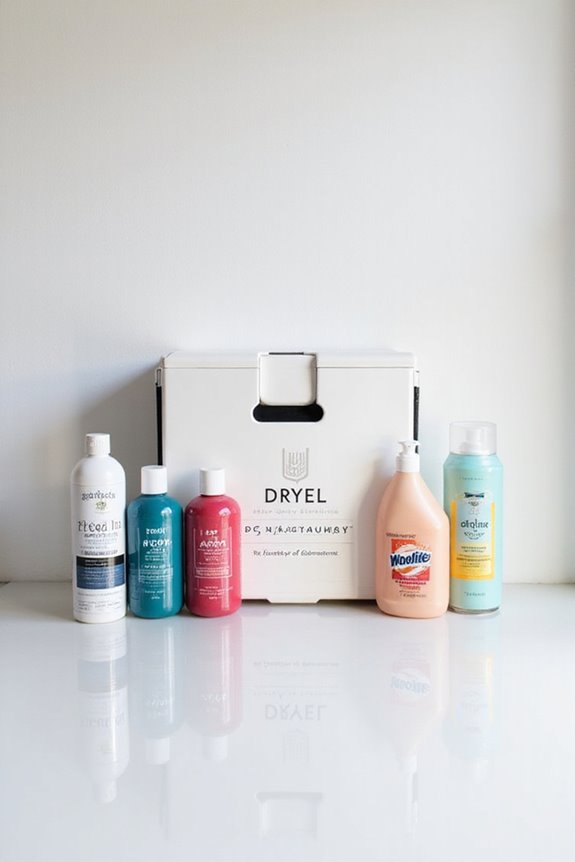We think steaming clothes after using Dryel is a great idea! It freshens up fabrics and helps get those pesky wrinkles out. Since steam can smooth without burning, it’s perfect for delicate materials. Plus, it eliminates odors caused by bacteria, leaving your clothes smelling great without a full wash. Just keep in mind some fabrics might not like steam as much. If you’d like to know more about fabric safety and steaming techniques, we have plenty to share!
Key Takeaways
- Steaming after Dryel freshens up clothes by relaxing fabric fibers and eliminating odors.
- It effectively reduces wrinkles, providing a smooth finish without the risk of burns.
- Steaming is gentler on delicate fabrics compared to traditional ironing, preventing damage.
- Handheld steamers are convenient and quick, making touch-ups easy for busy lifestyles.
- Always ensure fabric compatibility and use low heat for sensitive materials to avoid distortion.
Benefits of Steaming After Dryel
When we think about freshening up our clothes after using Dryel, steaming can be a game-changer. Using steam techniques not only helps relax fabric fibers, but it also effectively reduces wrinkles, giving us a smooth finish. We find it’s gentler than ironing—no risk of burns or new creases! Plus, it creates that natural, relaxed look we love for casual wear and delicate fabrics.
Steaming also eliminates odor-causing bacteria, leaving our clothes fresher. It’s quick, too—much faster than ironing! We’ve noticed that our garments feel softer and drape better afterward. By incorporating steaming into our fabric care routine, we save time and money while extending the life of our clothes. Who knew a little steam could work magic? Additionally, using a steamer with adjustable settings allows us to customize the steam output for different fabric sensitivities, ensuring optimal care for our garments.
Fabric Safety Considerations
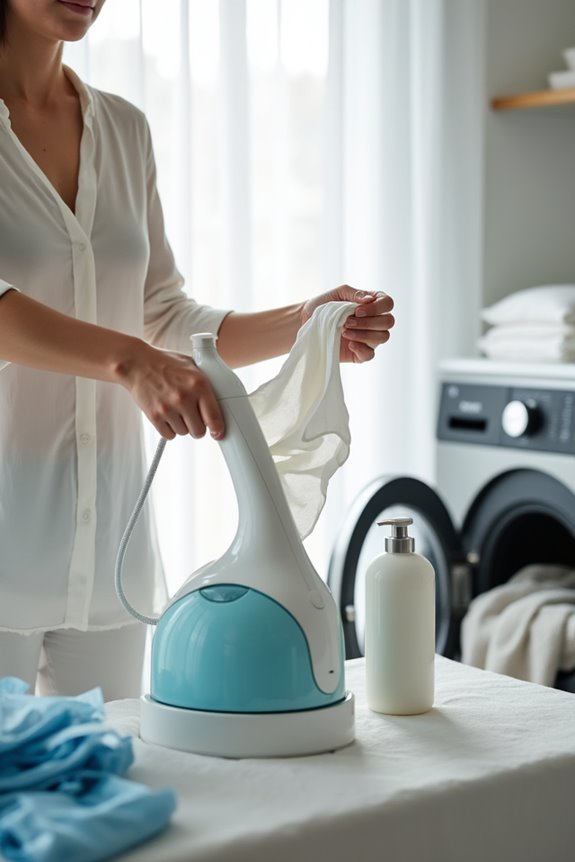
Steaming our clothes after using Dryel can seem like a smart move, but we need to be mindful of the fabrics involved. Not all materials play nicely with steam! Some fabrics, like viscose and silk, are delicate and can warp or shrink if we’re not careful. For polyamide blends, we should stick to low heat and keep the steam brief. It’s essential to take into account fabric compatibility before diving in. Remember, too much moisture can distort those “dry clean only” items. When using steaming techniques, let’s maintain a safe distance and avoid direct contact to prevent spotting. By being cautious, we can keep our clothes looking fresh without risking damage from Dryel’s residue or the heat of steam. Additionally, using hypoallergenic and pH-neutral detergents can further safeguard delicate fabrics from potential harm.
Effectiveness of Steaming for Wrinkle Removal
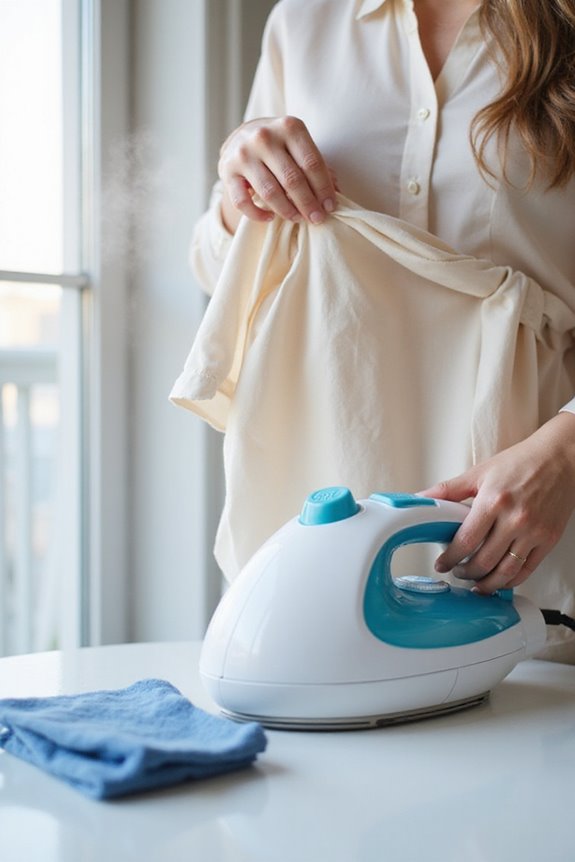
While we might not think about it much, the effectiveness of steaming for wrinkle removal can be quite impressive. Using proper steaming techniques, we can tackle various wrinkle types, from light creases to moderate folds. The steam works by heating fabric fibers, loosening them up, and letting the moisture penetrate deep. This makes wrinkles much easier to smooth out.
We’ve found that steaming is gentler than traditional ironing, which can scorch delicate fabrics. Plus, it gives clothing a more natural finish without those harsh pressed lines. Just remember, for stubborn wrinkles, we might need to combine steaming with a gentle press. Overall, steaming is a great option for keeping our clothes looking fresh and wrinkle-free!
Odor Elimination and Sanitization Properties
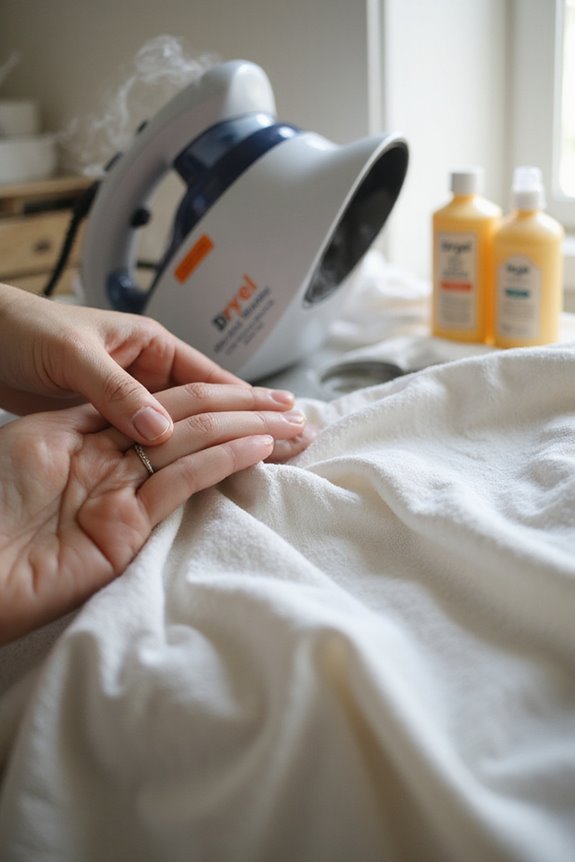
Odor elimination and sanitization are two fantastic benefits we get from steaming our clothes. When we use steam, we’re not just making our garments look fresh; we’re also using effective odor removal techniques. The high heat from steam kills up to 99.9% of odor-causing bacteria, which is pretty impressive. Plus, steam efficiently lifts sweat and dirt that cling to our fabrics, making it great for lightly soiled items. We can often freshen up our favorite party outfits without needing a full wash. Best of all, it’s just water vapor—no harsh chemicals! So, if you’ve just used Dryel, steaming afterward can really help in getting rid of any leftover scents. Trust us, your nose will thank you!
Hygiene and Allergen Reduction Benefits
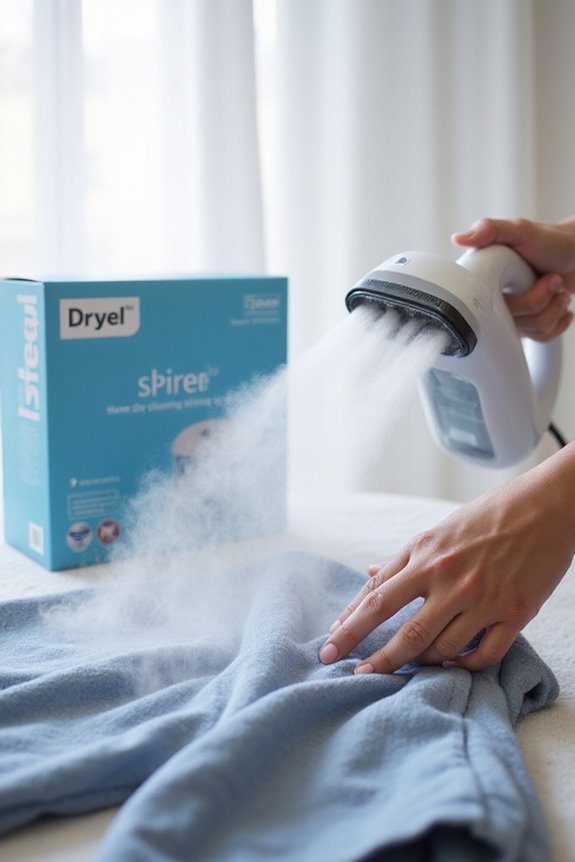
After we’ve tackled odors with steam, it’s time to look at another fantastic benefit—hygiene and allergen reduction. Using steam at temperatures above 200°F helps with allergen release by penetrating fabric fibers and loosening dust mites. This high-temperature steam not only eliminates common allergens but also kills bacteria like E. coli and salmonella. Plus, it revitalizes our clothes without the harsh chemicals found in traditional dry cleaning. We’ve noticed that a few passes of steam can greatly reduce residues such as sweat and surface dirt, keeping our garments fresh. So, when we steam after Dryel, we’re not just revitalizing; we’re also giving our clothes a deeper clean while preserving their delicate fibers. Incorporating steam into your laundry routine can enhance sanitizing properties assessment, ensuring a thorough clean.
Convenience of Handheld Steamers
When we think about the convenience of handheld steamers, it’s easy to see why they’ve become a go-to for quick garment care. Their portability features make them perfect for busy lifestyles. We can toss them in our bags without worrying about the bulk. Plus, they heat up in under a minute—who doesn’t love that?
With a simple one-button operation, we can de-wrinkle clothes while they hang, saving time and hassle. The lightweight design means we won’t strain ourselves, even when tackling multiple items. And let’s face it, using a steamer is way more fun than setting up an ironing board! If we want user convenience, handheld steamers are the way to go. They’re a real game changer for quick touch-ups! Additionally, most models offer quick heat-up times that cater to our fast-paced routines.
Limitations of At-Home Steaming vs. Professional Dry Cleaning
While we appreciate the convenience of at-home steaming, it’s essential to recognize its limitations compared to professional dry cleaning. At-home limitations include a lack of stain removal power—especially for stubborn oil or grease stains. While steam does a great job of relaxing fibers and freshening up fabrics, it often can’t tackle deep-set dirt like dry cleaning can. Plus, delicate fabrics like silk need that professional cleaning touch to avoid damage. We love how home steamers are quick and cost-effective for everyday use, but they can’t fully replace the expertise of a dry cleaner. Additionally, using hypoallergenic formulations is crucial when caring for sensitive fabrics, ensuring they remain in good condition. So, while steaming is handy between cleanings, let’s not forget the value of professional cleaning for those special garments!
Frequently Asked Questions
Can Steaming Replace Traditional Ironing Entirely?
Can we really say steaming can replace traditional ironing entirely? With steaming benefits like quick setup and gentle care for delicate fabrics, it’s a fantastic ironing alternative, especially for busy lifestyles and revitalizing clothes on-the-go.
How Often Should I Steam My Clothes?
When considering how often we should steam our clothes, frequency recommendations vary by fabric care. Delicate fabrics need less steaming, while everyday wear benefits from a touch-up every 1-2 weeks for a fresh look.
Is Steaming Safe for All Types of Fabrics?
When considering fabric types, we find steaming techniques generally safe for most materials. However, caution’s essential with delicate fabrics; knowing each fabric’s needs helps us avoid damage while effectively revitalizing our garments.
What Should I Do if Steam Burns My Fabric?
If we experience steam burns on our fabric, we should stop steaming immediately, assess the damage, and consider fabric repair options. Prioritizing steam safety in the future will help prevent similar mishaps.
Can I Use Tap Water in My Steamer?
Using tap water in our steamer can feel like inviting a mineral monster to our clothes! For ideal steam quality, we should consider distilled or filtered water, especially if our area has hard water.

